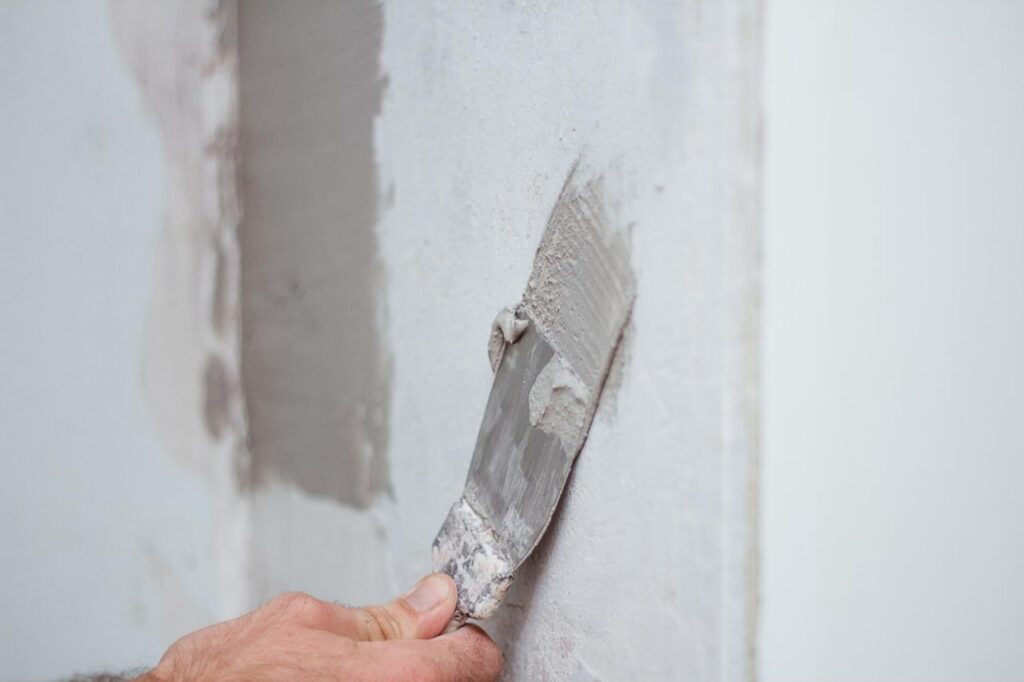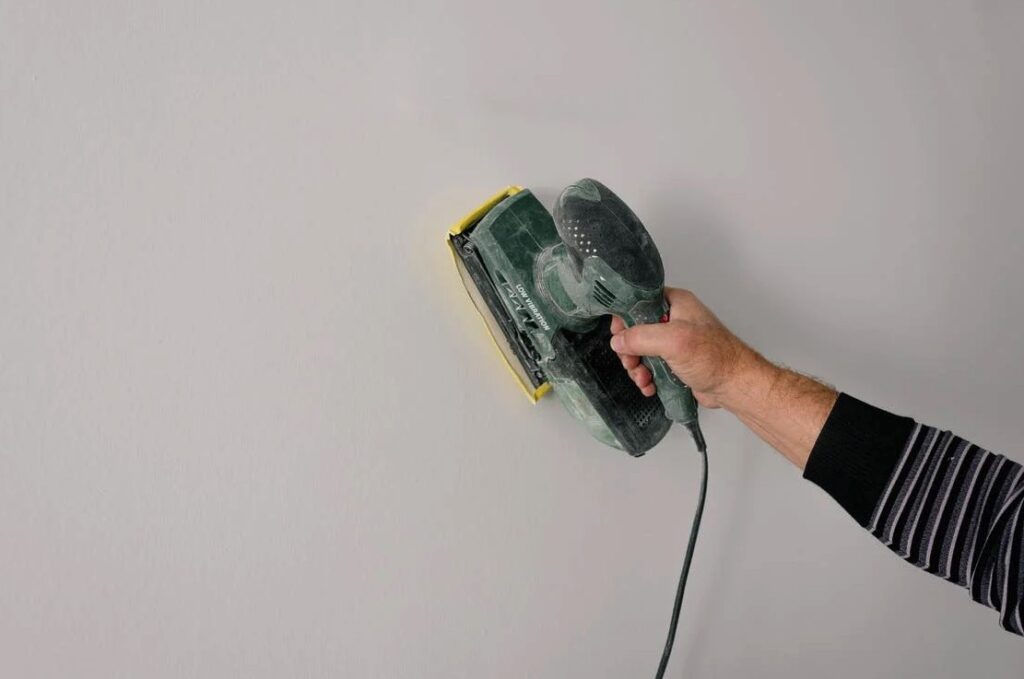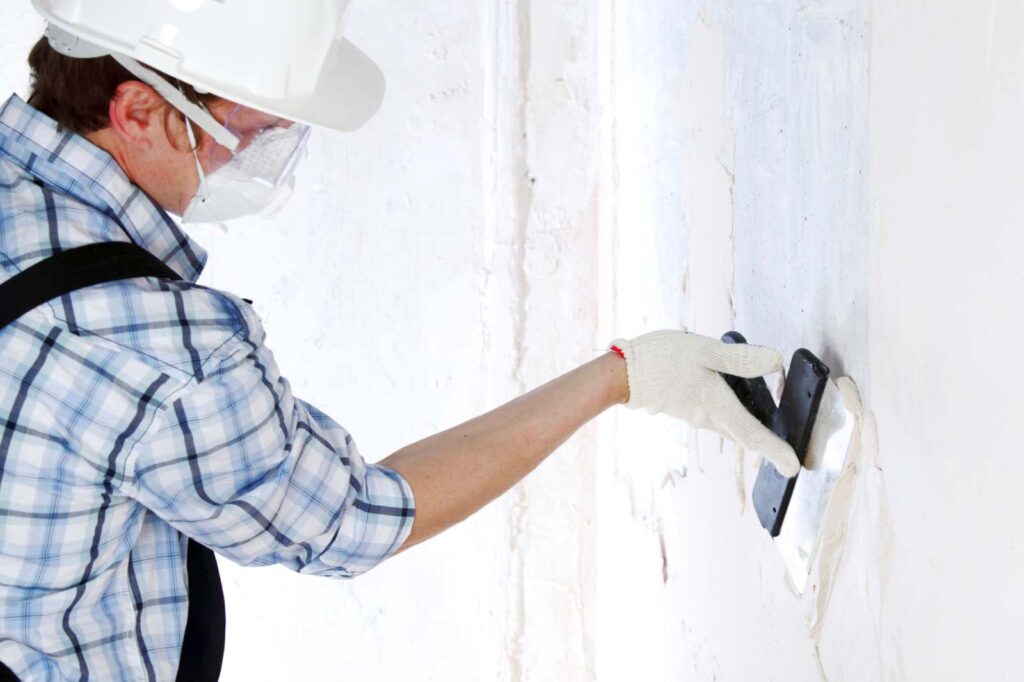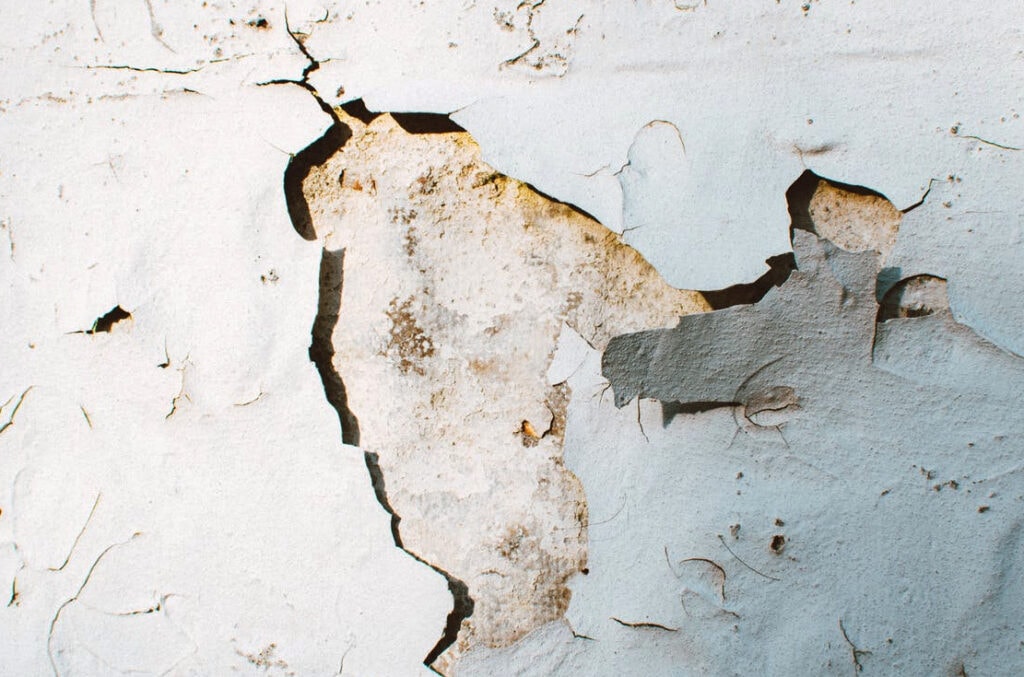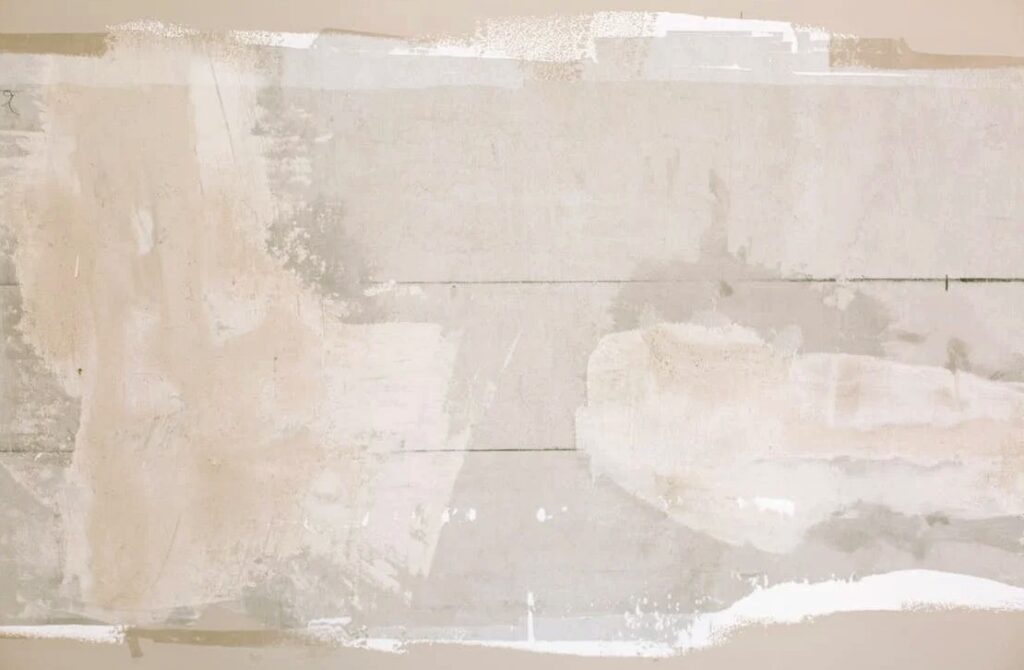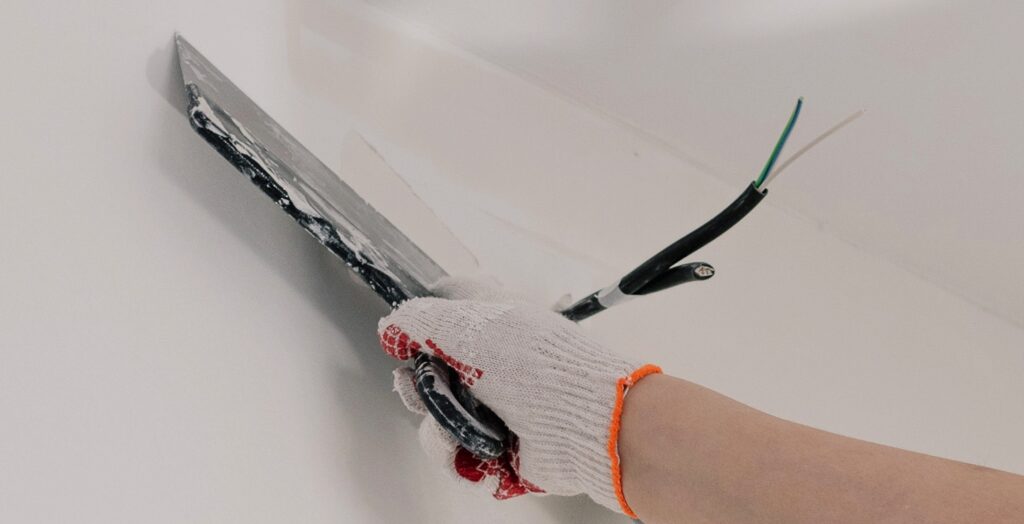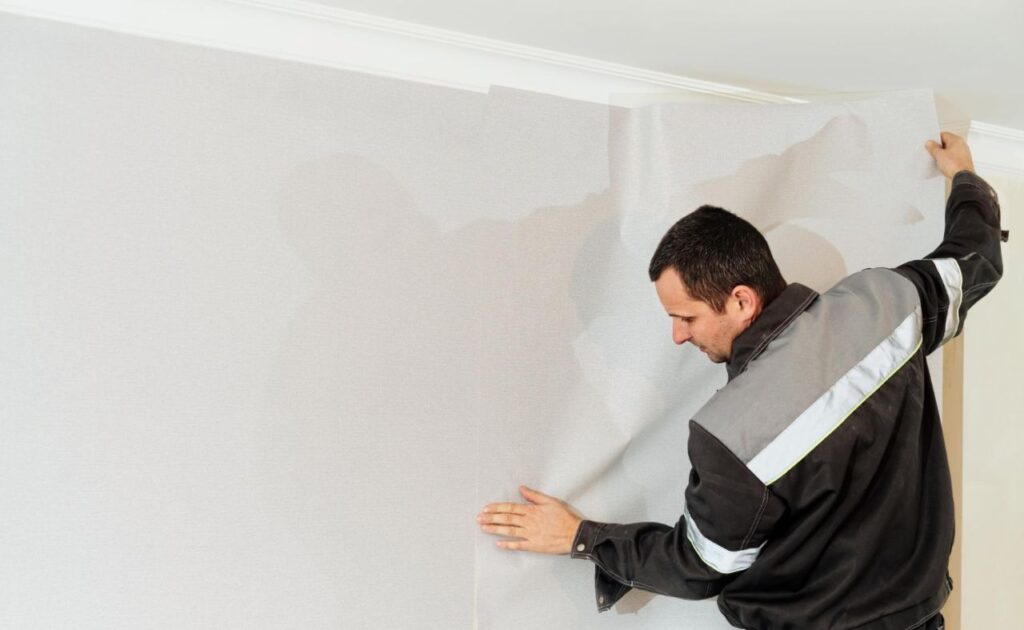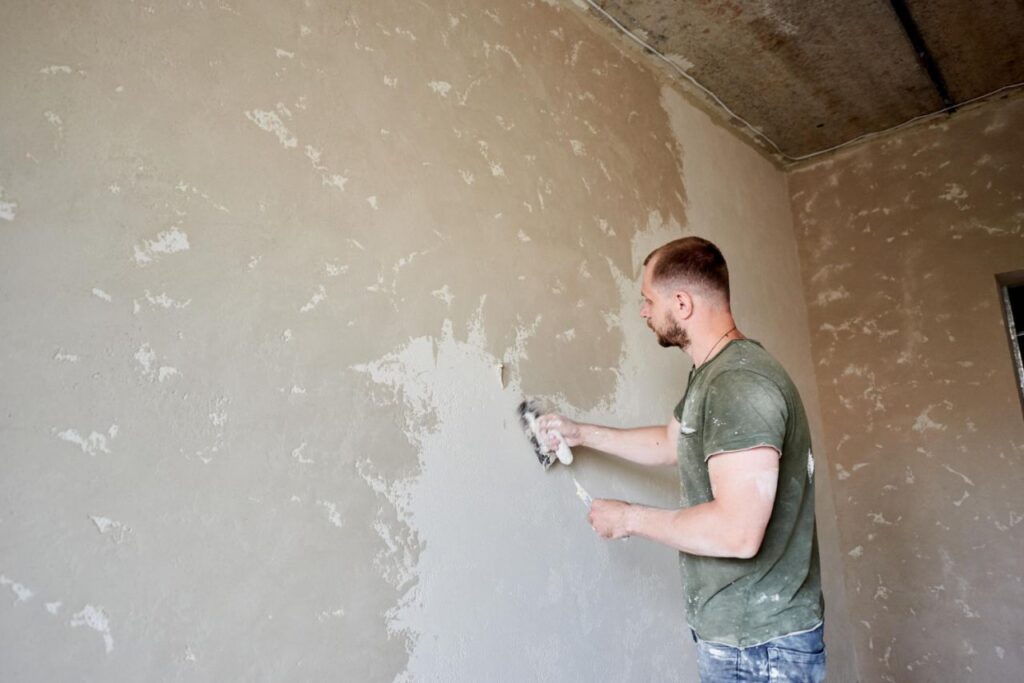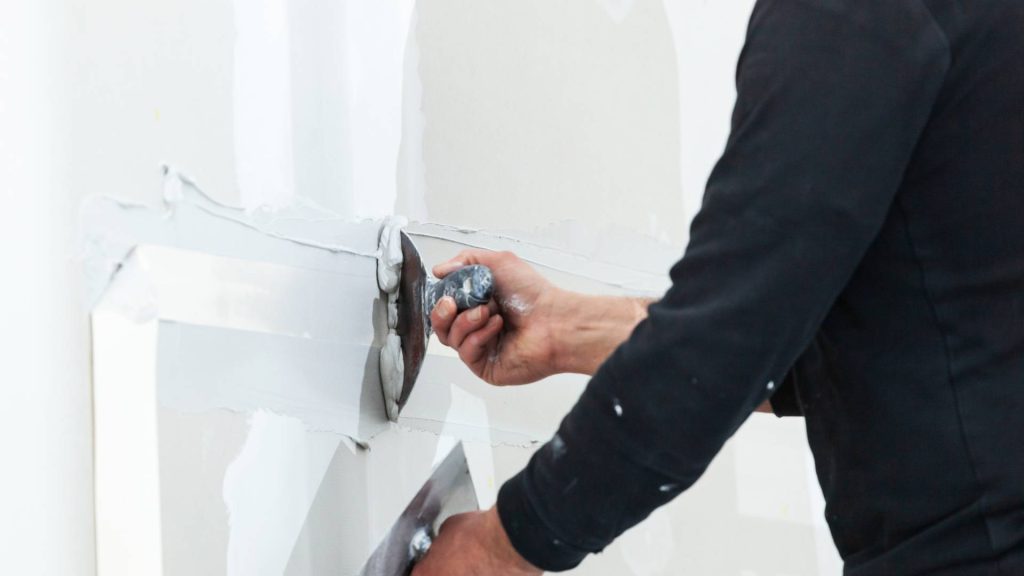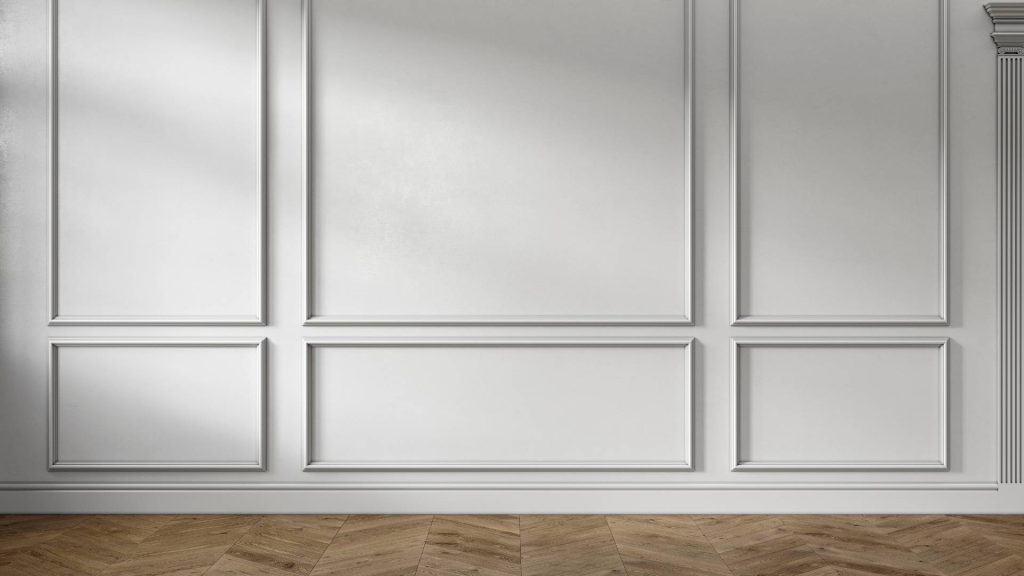Is your plaster ceiling in need of repair? There are several options for accomplishing this. It's always best to start with some investigation into the cause of the damage and the extent of the damage, as well as the structure of your ceiling (more on that later), as this will determine which method you use.
Fortunately, it's usually not too difficult to get the ceiling back to its original smooth condition, so you won't have to plaster it from top to bottom.
Using a putty knife, you can repair plaster damage and prepare it for repainting. Repairing minor holes and dents with spackle or drywall compound is another option. In extreme cases, it may be necessary to remove and replace the ceiling entirely. In such a situation, it can be helpful to know how to hang drywall or repair drywall.
Repairing A Plaster Ceiling
Plaster ceilings can be difficult to repair, so it's important to determine their structure and possibly the cause of cracks before beginning work.
Some causes include water intrusion, in which case you'll need to know how to repair a ceiling once water damage has occurred.
Lath-and-plaster ceilings have been mostly phased out in favour of drywall or plasterboard, which is subsequently skimmed with a thin coating of plaster to obtain the same smooth finish.
Plaster ceilings come in a wide variety of styles, therefore the best way to repair it will depend on your specific ceiling.
We've put together this basic guide to help you spot the warning signs and understand how to repair a plaster ceiling correctly, whether the damage has come as a consequence of addressing a ceiling leak, bad DIY work, simple wear and tear, or something a little more serious.
Determine the Source of the Problem
It is important to determine what caused the damage to your ceiling before beginning any repairs.
The problem may be immediately apparent; for instance, if your ceiling has developed unpleasant yellow stains, you should probably read up on how to repair water damage.
Sometimes, however, things get more complicated.
Most cracks in plaster ceilings are purely cosmetic, either as a result of temperature shifts or because of do-it-yourself projects. Nonetheless, research is recommended.
Although hairline fractures are normally nothing to worry about, cracks wider than 1/10 of an inch may indicate structural issues. In this instance, it's best to call in an expert for a closer look.
If the crack in question extends from the floor to the ceiling, understanding the causes of wall cracks will be helpful in finding a solution.
Plaster ceiling repairs should be considered only after the underlying problem has been identified and addressed.
What causes plaster wall and ceiling damage?
Plaster walls and ceilings are common construction materials because of their long lifespan and aesthetically pleasing appearance.
Plaster, like other construction materials, can be harmed by a number of factors. Some of the most typical culprits in the destruction of plaster walls and ceilings are as follows:
Water Damage
Water damage is a common problem for walls and ceilings made of plaster.
This might happen as a result of broken pipes, a leaking roof, or natural disaster-caused floods. Plaster can easily fracture, deform, or collapse if exposed to water, which weakens its structural strength.
Furthermore, mould development caused by water damage can be extremely hazardous to the health of the building's inhabitants.
Cracks and Holes
The settling and shifting of a building, as well as the impact and pressure of large objects, can cause plaster walls and ceilings to crack and develop holes over time. Plaster that has developed cracks and holes may become more susceptible to harm from water and insects.
Wear and Tear
Wear and tear, such as scuffs, dents, and scratches, can also damage plaster walls and ceilings. This can happen from regular cleaning or use, as well as from the rubbing of furniture or other things.
Humidity and Temperature Changes
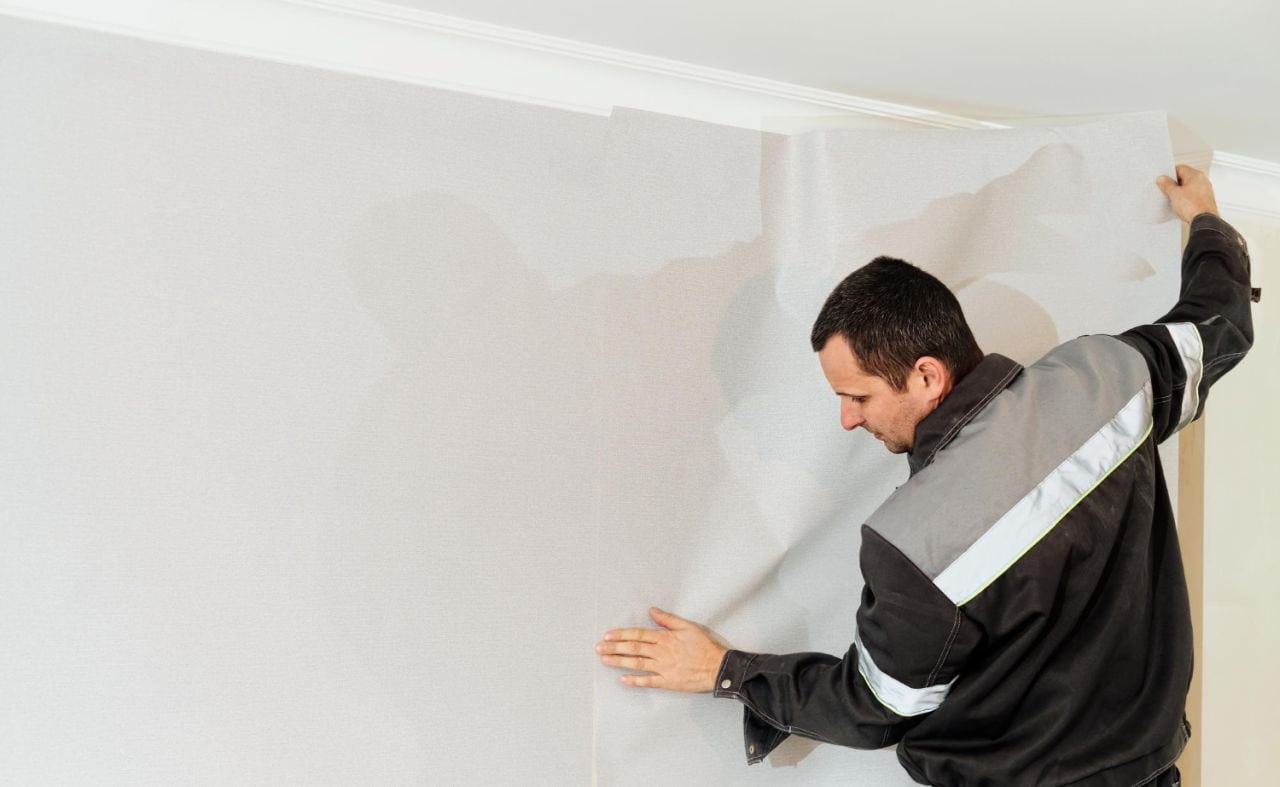
Plaster walls and ceilings are susceptible to deterioration from moisture and temperature fluctuations. Plaster can absorb moisture from the air and expand or crack if the humidity level is too high. Plaster is susceptible to damage from expansion and contraction brought on by changes in temperature.
Pest Infestations
Plaster can easily be damaged by pests like termites, ants, and rodents. Pests like these can eat holes and fissures into plaster, rendering the surface useless.
Improper Installation or Maintenance
Finally, problems with plaster walls and ceilings might arise from sloppy construction or neglect.
Damage from the aforementioned causes may accumulate over time if the plaster is not placed appropriately or maintained regularly.
Water damage, cracks and holes, wear and tear, humidity and temperature variations, pest infestations, and faulty installation or maintenance are all potential threats to plaster walls and ceilings.
It's crucial to keep an eye out for these potential dangers and respond swiftly to any damage that does occur. Your plaster walls and ceilings will last longer and be safer if you inspect them often and fix any faults that are found before they worsen.
Protect The Area
No matter how extensive the damage is, old plaster is hazardous and requires special safety precautions, such as a face mask and goggles. Drop cloths and plastic should be used to protect the floor and walls from dust and scrapes.
How to Repair Plaster Ceiling Cracks and Holes
Repairing nail holes and gouges from do-it-yourself labour, as well as fine cracks in a plaster ceiling, are examples of purely cosmetic issues that may be dealt with quickly and easily. It's odd, but widening the gap might be the best option.
Doing so will guarantee a sufficient quantity of simple sand enters the fissure, allowing for a strong, significant fill.
Brush away any dust or dirt before using a putty knife to apply joint compound or filler, then scrape away the excess as you go.
Let several thin coats dry, then sand down to achieve a flat, smooth surface.
Prime it and paint it to coordinate with the wall.
Using mesh or fibreglass tape over larger fractures before filling and smoothing them with the joint compounds is a good idea.
Even with a smaller hole, this technique still succeeds.
Repairing a Sagging Plaster Ceiling
Plaster that flakes or cracks is an easy fix, but when it begins to sag, or "belly out," from a wall or ceiling, it's a sign of more serious damage.
Plaster is heavy, so it must be installed on a sturdy foundation. Lath is a substrate that is affixed to the framing of a wall or ceiling and is often made of strips of wood or metal wire mesh. Plaster, when applied, forms "keys" by forcing itself through the lath and then hardening to make a solid integrated link with the wall.
Keys can come loose after years of use because of the plaster drying up or becoming brittle due to vibration. Lath detachment from the framing is also possible. Sagging is often the first indicator that gravity and the weight of the plaster are taking their toll, followed by the complete collapse of the plaster surface.
You might want to get an expert involved now. If the ceiling is sagging, it's not only tough to repair a significant section of wall, but also to work overhead with heavy, awkward materials. Still interested in DIY maintenance? Here's what you need to know:
- Before you begin, make sure the flooring underneath your work area is safe, as the entire affected area may give way once you get started. Plaster dust may easily travel throughout a home, so it's important to seal off the area being worked on by hanging damp sheets or taping plastic sheeting over the doorways and installing an exhaust fan in an open window. In order to prevent the ceiling from collapsing in on itself, you can construct T-shaped supports out of 2 by 4s and use them to hold a sheet of plywood flat against the ceiling.
- Chip away at the bulge's edge using a hammer and cold chisel or wrecking bar; just make sure you wear protective eyewear. If the plaster has peeled away from the lath or the lath has come loose from the framing, you should be able to tell once you get a look under the surface. It may be possible to reattach the lath to the framing without having to remove the plaster if the lath has come loose but the plaster is still firmly attached to it.
- Employ drywall screws that are at least half as long as the distance between the studs in the wall. Start screwing near the rounded border of the ceiling and press the ceiling forwards. Plaster and lath may be reinstalled without any trouble since they join together to form a single sheet, much like drywall. However, this may be impossible if the lath has warped or if the old nails in the framing prohibit the lath from being readjusted. To bring the lath back up, you may need to first remove much or all of the plaster.
- Just removing the old plaster will allow you to see if the lath is still attached to the ceiling joists. It's a messy operation, but the plaster should come off the framing easily if there's nothing keeping it in place.
- Plaster walls and ceilings can be repaired by leaving the old plaster in place and refacing the area with new drywall, which is a technique used by professionals. Drywall and the previous ceiling are pulled level with the framing using long screws with washer heads. Even though you're left with a drywall finish, the issues with sagging, cracking, and flaking plaster are permanently resolved.
Is it necessary to replace water-damaged plaster?
It is not always required to repair a complete wall or ceiling due to water damage to the plaster.
Nevertheless, before you take any drastic measures, you should figure out how extensive the damage is and what you can do to stop it from getting any worse.
Drying out the damaged area and fixing any cracks or holes that may have occurred may be sufficient to restore minor water damage in some circumstances. Plaster damage is repaired by removing the affected area, using a bonding agent, and then applying a patch of joint compound or spackle.
If the affected area is small and the wall's or ceiling's underlying structure has not been harmed, this method may be successful.
Nonetheless, it may be required to repair the damaged plaster if the water damage is substantial or if it has compromised the structural integrity of the wall or ceiling. In most cases, this requires tearing out the damaged wallboard and replacing it with brand-new drywall or plaster.
This may be required to ensure the safety and stability of your property, but it can be more time-consuming and expensive than merely patching the damaged area.
Furthermore, mould development caused by water damage is a severe health danger that you and your family should be aware of. When water damage to plaster is suspected, it's best to take care of it right away so that it doesn't worsen.
In conclusion, if your home's plaster has been damaged by water, it may not always be necessary to repair it. But, you should always assess the damage and take the required steps to prevent further damage and maintain the safety of your property.
It is recommended that you seek the advice of a specialist if you are unsure of the degree of the harm or the best course of action to take.
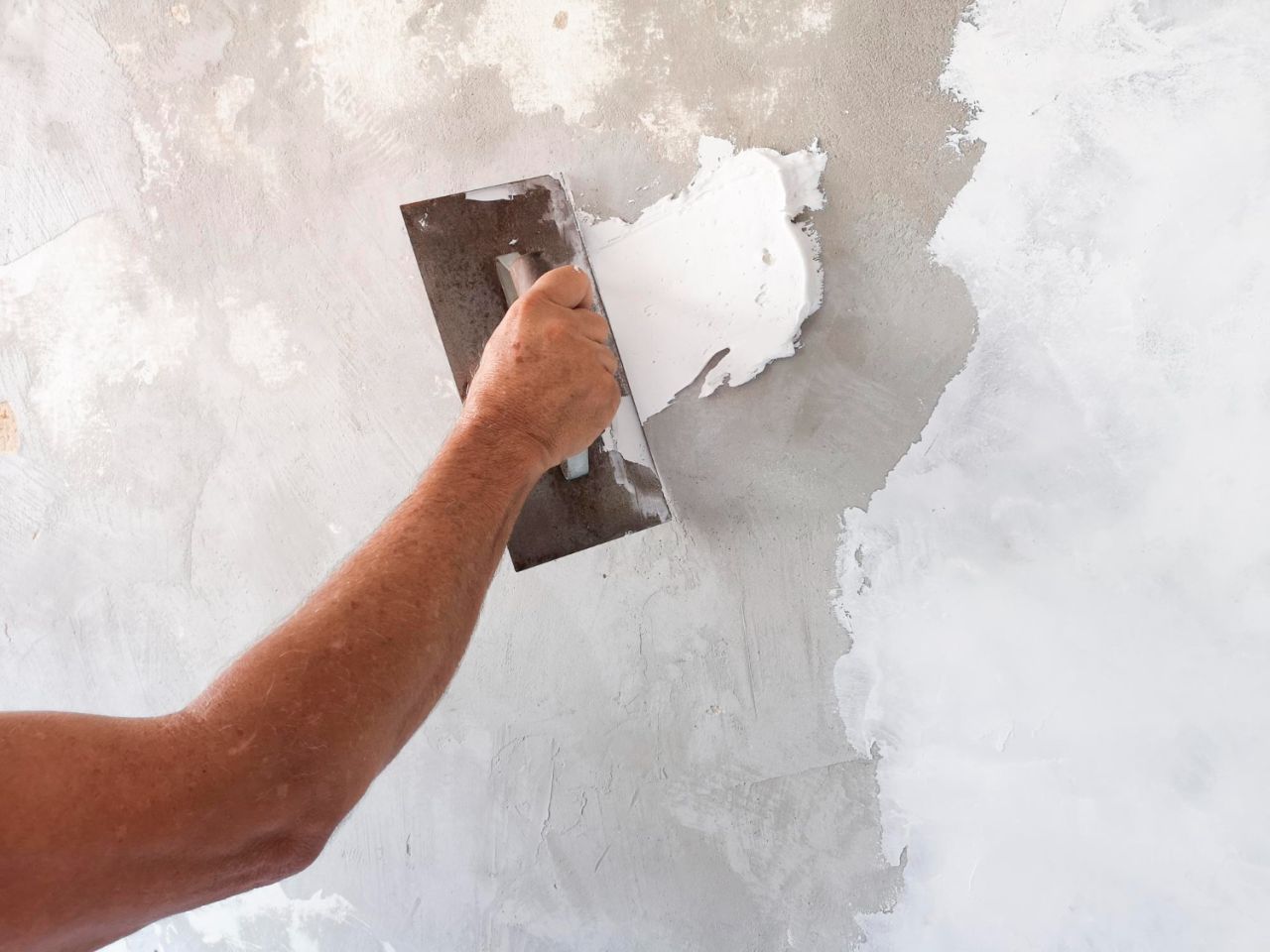
Conclusion
The instructions for fixing a plaster ceiling are the meat and potatoes of this article. Before beginning repairs, it is essential to determine the root of the problem, the full extent of the damage, and the ceiling's structural integrity.
Cracks wider than 1/10 of an inch may indicate structural issues, so tracing their origin is also crucial. Whether the damage is the result of fixing a ceiling leak, poor do-it-yourself work, normal wear and tear, or something more serious, this guide will help you recognise the warning signs and understand how to repair a plaster ceiling correctly. Plaster is widely used for wall and ceiling construction because of its durability and aesthetic appeal.
Plaster walls and ceilings are susceptible to damage from water seepage, cracks and holes, normal wear and tear, humidity and temperature changes. Broken pipes, a leaking roof, or floods from a natural disaster are all potential sources of water damage.
The movement and shifting of a building, the impact and pressure of heavy objects, normal wear and tear, and changes in humidity and temperature are all factors that can lead to cracks and holes.
Water damage, cracks and holes, wear and tear, humidity and temperature variations, pest infestations, and faulty installation or maintenance are all threats to plaster walls and ceilings. It is critical to remain vigilant in the face of such threats and take immediate action in the event of damage.
If you want to patch a hole or crack in a plaster ceiling, you should make the opening bigger so that more simple sand can squeeze in. A flat, smooth surface can be achieved by applying joint compound or filler with a putty knife and then sanding it down.
The joint compounds should be filled and smoothed over mesh or fibreglass tape over larger cracks. Lath must be fastened to the framing and a solid base must be laid before the plaster can be applied.
The effects of gravity and the weight of the plaster are often first apparent in the form of sagging.
Seal off the area to be worked on, build T-shaped supports out of 2 by 4s to hold a sheet of plywood flat against the ceiling, and use a hammer and cold chisel or wrecking bar to chip away at the bulge's edge.
If the lath has become detached from the framing or the plaster has peeled away from the lath, it may be possible to reattach the lath to the framing without removing the plaster. It may be impossible to readjust the warped lath or old nails in the framing and raise the lath back to its original position.
Plaster walls and ceilings can be repaired using a professional technique that involves leaving the old plaster in place and refacing the area with new drywall. Plaster damaged by water may not always need to be replaced, but it is important to assess the level of damage and take preventative measures.
Frequently Asked Questions About Plasterer
Plaster is more expensive than gypsum. Cement and cement lime plaster are cheaper alternatives. The substance used is chlorine, which is highly toxic in its pure form.
White cement is not the same as plaster; it has a different consistency. The former, made of gypsum, is used to make casts for medical purposes (such as when repairing a fracture), while the latter is put on walls to make them shine.
Many people fear working with plaster because of its inherent dangers. Though it is not dangerous in the right hands, the substance is generally considered safe for everyday use. Anything embedded in the plaster runs the risk of being trapped and subjected to extreme heat.
Plaster is the best option for repairing gaps in plaster walls because its properties are more likely to match the wall material. Plaster isn't often used to repair drywall, but it does a great job of reinforcing interior walls.
When you want to clean your Venetian plaster walls, all you have to do is wipe them down. In order to lengthen the life of walls, routine maintenance such as cleaning and sealing is recommended.
